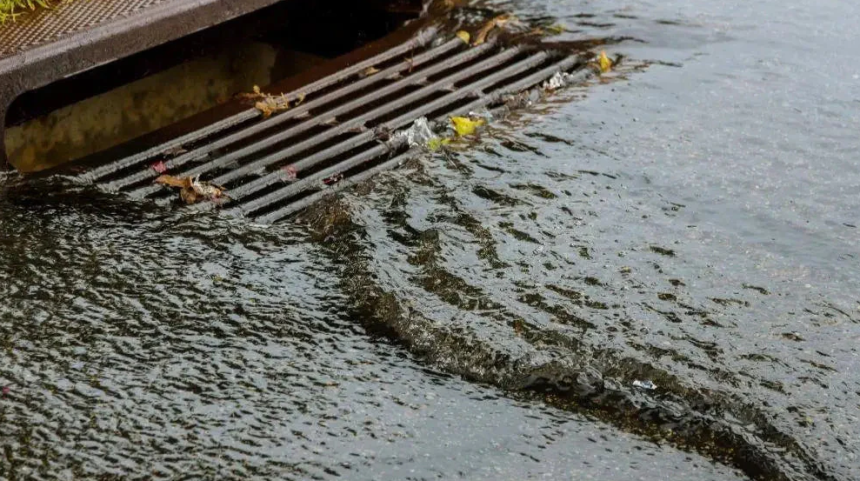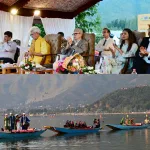Srinagar, known for its stunning landscapes and serene Dal Lake, transforms into a scene of chaos and distress with every heavy downpour. The recurrent flooding is not just an inconvenience; it is a stark reminder of the city’s inadequate and outdated drainage system. An overhaul of this system is not just necessary; it is imperative for the safety, health, and prosperity of Srinagar and its people.
Every year, Srinagar grapples with the aftermath of heavy rains, which result in widespread water logging and flooding. The absence of a robust drainage infrastructure in Srinagar has far-reaching consequences for both the residents and the environment. During heavy rainfall or snowmelt, water accumulates on roads, causing severe traffic congestion and hindering emergency services.
Moreover, water logging poses a serious threat to public health. Additionally, the damage caused to roads, buildings, and infrastructure due to water logging leads to substantial economic losses for the city. Over the years, the valley has witnessed erratic weather patterns, including intense rainfall and sudden temperature fluctuations. These climatic variations demand a drainage system capable of efficiently managing excessive precipitation
Furthermore, rapid urbanization has increased the amount of impermeable surfaces in the city, such as concrete roads and buildings, further exacerbating drainage issues. It is crucial to adapt to these changes by implementing sustainable and innovative drainage solutions. The government has been trying to upgrade the infrastructure, but progress has been slow and inconsistent. The city’s burgeoning population and rapid urbanization require a more proactive and comprehensive approach.
The need of the hour is to have a well-planned, efficient, and resilient drainage system that can withstand the challenges posed by climate change and urban expansion. Implementing a modern drainage system is not a mere infrastructural upgrade; it’s an investment in the future of Srinagar. A robust system will not only mitigate flood risks but also enhance public health, improve the quality of life, and boost the city’s tourism potential
The floods of 2014 serve as a grim benchmark of the destruction that inefficient drainage can wreak. The catastrophe submerged large parts of the city, causing widespread damage to property, infrastructure, and livelihoods. Despite this wake-up call, progress on improving the drainage system has been sluggish. Temporary measures and ad-hoc fixes have proven grossly insufficient in the face of increasingly erratic and intense weather patterns attributed to climate change.
An efficient drainage system is foundational to urban resilience. It mitigates the risk of flooding, safeguards public health by preventing waterborne diseases, and ensures the smooth functioning of the city. For Srinagar, a robust drainage infrastructure would mean not just survival, but the ability to thrive despite the climatic challenges.
The current drainage infrastructure in Srinagar suffers from several critical issues. Firstly, it is outdated and ill-equipped to handle the volume of water that the city now receives. Secondly, rampant and unplanned urbanization has encroached upon natural water bodies and drainage channels, further exacerbating the problem. Finally, there is a significant gap in regular maintenance and clearance of drainage systems, leading to blockages and overflow during heavy rains.
Addressing these issues requires a multi-faceted approach. Modernizing the drainage system with state-of-the-art technology is essential. This includes installing efficient storm water drains, pumping stations, and real-time monitoring systems. Integrating green infrastructure, such as permeable pavements and rain gardens, can help absorb and channel rainwater effectively. Additionally, restoring and protecting natural water bodies and wetlands is crucial, as they play a vital role in flood management.
Urban planning and policy must prioritize drainage infrastructure. This involves strict regulation of construction activities to prevent encroachment on drainage paths and water bodies. Public awareness campaigns are also needed to educate residents on the importance of proper waste disposal to avoid clogging drains.
Investing in a comprehensive and efficient drainage system may seem costly, but the long-term benefits far outweigh the expenses. A flood-resilient Srinagar will not only protect its citizens and their properties but will also enhance the city’s appeal as a tourist destination, boosting the local economy.
The need for an efficient drainage system in Srinagar is urgent and undeniable. It is a matter of protecting lives, preserving property, and ensuring the sustainable development of the city. The administration must commit to investing in sustainable and innovative solutions tailored to the needs of the Srinagar city that can mitigate the consequences of water logging and pave the way for a more resilient and prosperous future.
A robust system will not only mitigate flood risks but also enhance public health, improve the quality of life, and boost the city’s tourism potential. The government and the concerned authorities must invest in a comprehensive drainage master plan that accounts for the city’s unique topography, hydrology, and climatic conditions. This plan should prioritize the construction and maintenance of flashflood drains and culverts to effectively channel the excess water during heavy rainfall. Additionally, the use of permeable pavements and green spaces can aid in water absorption and reduce runoff. Efforts to improve the drainage system cannot succeed without the active involvement of the public.
The time to act is now. Srinagar’s beauty and tranquility can be preserved, but only if we address the underlying infrastructural deficiencies with the seriousness and urgency they demand. Let’s transform Srinagar into a city that is not just beautiful but also resilient, clean, and healthy. Let’s give the city the efficient drainage system it deserves and needs.
(Author is Civil Engineer working in Dubai and columnist)








